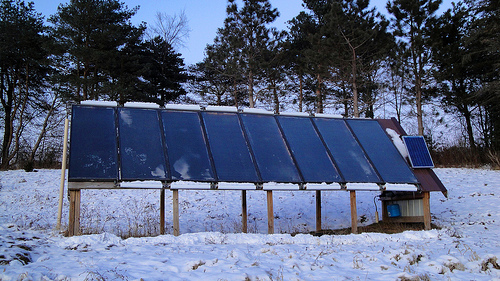Xcel Energy contends that there is “simply no advantage to forming a utility in the way that Boulder is attempting.” This unsupported statement gives me pause and compels me to set the record straight.
The public power option is not new. Local communities have long had the right to own and operate their own electric utility or to grant a franchise to a private or investor-owned (IOU) utility. The reason to do so varies. Many communities choose public power because they want lower rates, or better reliability, or improved service. This freedom to choose how electric service is provided is a local rights issue and a cornerstone of consumer protection.
Today, there are more than 2,000 public power utilities in the U.S., serving communities as small as Shelly, Minnesota (with fewer than 100 customers) and as large as Los Angeles, California (with more than 1.4 million customers). Most public power utilities are owned by cities and towns, but some are owned by counties, public utility districts, and states. Although different in size and location, they all have a common purpose: providing reliable and safe not-for-profit electricity, at the lowest reasonable price, while protecting our natural environment. They are rooted in the American tradition of neighbor helping neighbor to meet local needs.
Read the rest of the commentary by Mark Crisson – president and CEO of the American Public Power Association – in the Boulder Daily Camera
At the heart of public power is local control — community stakeholders making policy decisions so that utility services are in tune with customers’ needs and values. In public power communities, decisions on vital services that affect every home and business are made through the local democratic process, at the ballot box or by participation in city council and utility board meetings, public hearings, and other public forums.
IOUs such as Xcel Energy generally oppose the formation of new public power utilities because, for them, it means the loss of customers and profits. New public power utilities also provide high-profile examples of what communities can do for themselves, and this may encourage other cities to form public power utilities.
For these reasons, IOUs often employ an array of tactics to fight the formation of new public power utilities. The most common tactic is to try to discredit public power and thereby create doubt and fear about alternatives to renewing their incumbent franchise. But in fact, public power has been so successful at its focused mission that it has earned the praise of industry analysts, the financial community, and most importantly, electric consumers.
In its recently released white paper, however, Xcel Energy criticizes Boulder’s efforts to municipalize in part by making false claims about the creation of a municipal utility in Winter Park, Fla. Xcel claims that the city’s cost to form a municipal utility soared past initial estimates, but the final cost to form the utility was exactly the same as estimates provided by the consultants hired to study the issue. One of Xcel’s claims is true–Winter Park’s rates are now higher than the investor owned utility it replaced. There is a reason Winter Park’s rates are slightly higher — local control. Winter Park is a beautiful community with an extensive tree canopy and the new utility’s consumer-owners have ordered their local utility to move all of the city’s overhead electric lines underground. The reason why the city bought the utility was to improve its reliability record, which was the worst in Florida. When Winter Park began operating the utility, reliability improved significantly. It costs money to place overhead lines underground, and the people of Winter Park have chosen to increase their rates 3.9 percent to improve their service.
On average public power utilities have enjoyed a rate advantage over IOUs nationwide. For over 50 years, data from the U.S. Department of Energy demonstrate that IOUs, on average, charge more for electricity than public power utilities. In 2010, residential customers of IOUs paid average rates that were 13 percent above those paid by customers of public power utilities. The people of Boulder should consider these facts as they explore forming a public power utility.





